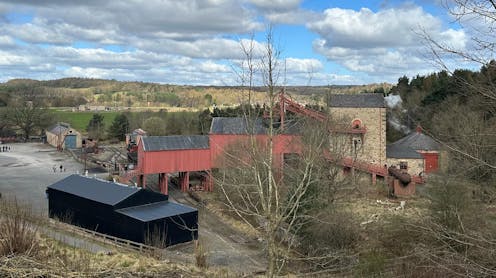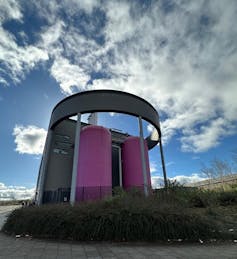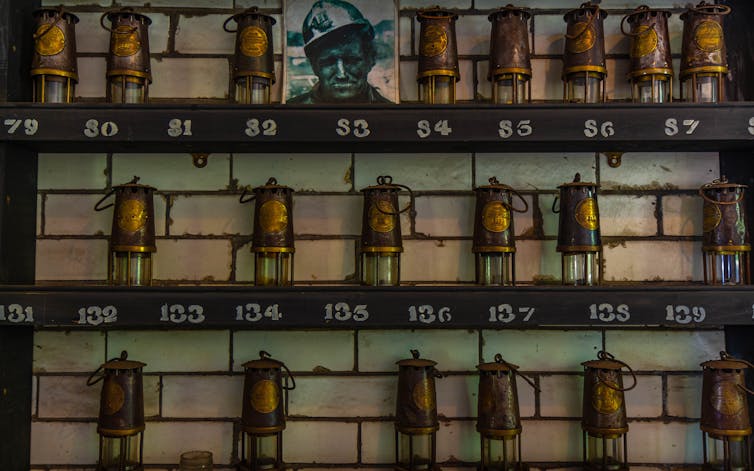
The Ukraine war sent shockwaves through global energy markets, driving up prices and leaving households across the UK struggling with soaring energy bills. But beneath the ground, in disused coal mines, lies a hidden resource – warm water. This underused geothermal source could be transformed into affordable, low-carbon heating for homes and businesses, especially in regions hardest hit economically by the decline of coal.
Across the UK, around 25% of the population lives above disused coal mines. This underground warmth could be harnessed by pumping naturally warm water to the surface and using heat pumps to raise its temperature for heating. This could lower energy bills and cut emissions by about the same as removing 44,000 cars from the roads annually, according to our calculations. Despite this promise, mine-water heating remains largely underutilised across the UK, as deployment has lagged far behind, leaving most of the resource untapped.
Although flagship projects like the one in Gateshead, operational since 2023, demonstrate the feasibility of mine-water heating in the UK, they remain the exception. Deployment has been especially slow even in high-potential areas like south Wales. Meanwhile, the mine-water heating scheme at Seaham Garden Village, near Sunderland, has only recently kicked off construction after a prolonged delay since its initial planning in 2019.
Our new research shows that despite growing interest, projects across the UK continue to be stalled by funding gaps, regulatory hurdles and a shortage of skilled workers. Without immediate action, these former coal-mining communities are at risk of falling further behind as the country moves towards cleaner energy for net zero, widening the gap between wealthier and disadvantaged regions.
The solution is simple but not easy: sufficient and accessible funding schemes especially for those undeserved communities, streamlined regulations and support from fossil fuel companies, whose engineering expertise can be applied to mine water heating. Technology could transform a forgotten coal legacy into a sustainable future for communities in need.

The UK has a vast network of abandoned coal mines, especially in north-east England, which once produced 14% of the nation’s coal. However, around a quarter of the population in this region lives below the poverty line today.
Many households in the north east experience fuel poverty at rates higher than the national average, with energy bills that are often higher than in most other parts of England. Mine-water heating could help address this burden, but to make a meaningful difference, both the number and scale of schemes must be increased nationwide.

However, current government funding schemes, like the heat networks delivery unit, only cover about 33% of capital costs according to our interviewee, leaving local authorities and developers to find the rest. This competitive model disadvantages poorer areas that need the most support. Without solid financial backing, many projects will never get off the ground.
The Coal Authority has played a key role in piloting early mine water schemes, but industry feedback points to a need for faster, more transparent deployment pathways. Developers face regulatory uncertainty in accessing mine-water heat from the Coal Authority, citing delays and procedural complexity as barriers to investment.
Ambiguities in the regulatory framework for accessing this form of geothermal heat create delays and add to the financial burden for developers. The expertise required, such as drilling and pipework, is common in the UK’s longstanding oil and gas industry, but our research found that the current small-to-medium scale and uncertain future of mine water heating sector make it difficult to attract these skilled workers.
Learning from the past
Often the simplest and most reliable designs are the most effective. William Reid Clanny, a 19th-century inventor, made mine-safety lamps more sophisticated but ultimately delicate and impractical – his design required manual air pumping, used fragile glass that broke easily underground, and was too heavy for regular use. The same principle applies to mine-water heating. Straightforward, direct policies can cut through red tape to get projects up and running without unnecessary bureaucratic complications.

For mine-water heating to work on a larger scale, funding must be easier to access, especially for regions hardest hit by the decline of coal. The Department for Energy Security and Net Zero could allocate funds specifically for these areas, giving them a fair chance to develop projects without having to compete with wealthier regions.
New rules should clearly set a timeline for gaining the permission to access and exploit the underground heat. This would give developers confidence and attract investment. The US and New Zealand show how clear rules can boost interest in renewables.
To overcome the skills shortage, the Indian government introduced a corporate social responsibility law whereby companies are required to invest a portion of their profits into local projects. Applying this approach in the UK could encourage fossil fuel companies to fund training and support local green initiatives. It could also provide opportunities for laid-off workers unable to find similar high-paying jobs abroad and training for local workers in former mining communities.
Mine water isn’t just a low-carbon heating source, it’s a chance to deliver justice to communities long left behind. But achieving this will require decisive action from policymakers. Unlocking this hidden resource can help power the UK’s green transition.
Don’t have time to read about climate change as much as you’d like?
Get a weekly roundup in your inbox instead. Every Wednesday, The Conversation’s environment editor writes Imagine, a short email that goes a little deeper into just one climate issue. Join the 45,000+ readers who’ve subscribed so far.
Cathy Hollis receives funding from the Natural Environment Research Council. She is affiliated with and President of the International Association of Sedimentology, a not-for-profit, non-political scientific society.
Alejandro Gallego Schmid and Jingyi Li do not work for, consult, own shares in or receive funding from any company or organisation that would benefit from this article, and have disclosed no relevant affiliations beyond their academic appointment.
This article was originally published on The Conversation. Read the original article.







